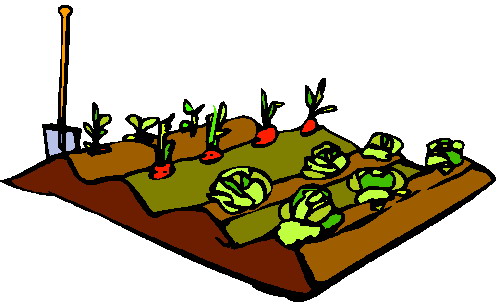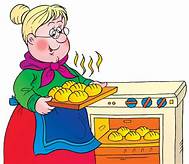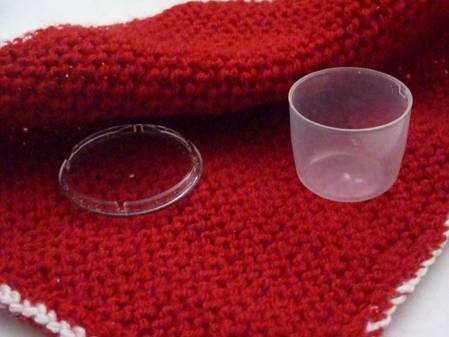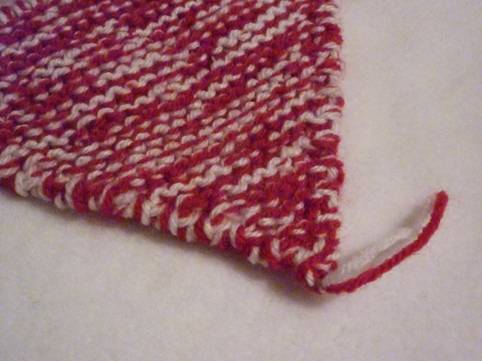
Salty Sam’s Fun Blog for Children
Number 315
A Healthy Garden
Hello Everyone

As you already know, Auntie Alice has the most enormous garden.
lf you went there, you might even get lost it is so big!
One of the things she is keen on, is trying to keep the expense of running it down to a minimum. lt is very easy to go to a nursery and come out spending more than you intended to when you love plants!
She is also keen to keep everything as natural as possible – that means not using chemicals.
She doesn’t want to use chemicals unless she has some sort of emergency where she feels she has no other choice.
To work with nature is a good way of making life easier for yourself.
For example, if you plant lots of pollinator-friendly flowers you will encourage hoverflies. They are lovely little helpers when it comes to clearing up greenfly and mites because their larvae (babies) eat them.
Favourite hoverfly plants are verbena and fennel and they also like any plant with daisy-like flowers.
Ladybirds are also a gardener’s friend. They like fennel too but they also like mint, sage and dill as well.
So it is a good idea to grow some, or all, of these plants.
lf slugs are a problem, there are a number of ways to deal with them.
Firstly, encouraging birds into your garden with feeders through the winter will mean the birds will be there to deal with your pests through the summer.
There are also lots plants they like to eat berries and seeds from through the winter months.
They like cotoneaster berries, crab apples, rowan berries and globe thistle and sunflower seeds. Grow these, and they will act like bird feeders that you don’t have to keep refilling!
Frogs are brilliant at eating slugs too. lf you build even a small pond they will just come – seemingly from nowhere, to live in the water and the plants around the pond.
Another way to get rid of slugs is to sprinkle porridge oats around your plants on a dry day. The slugs like eating them and the oats swell up and kill the slugs.
You can also sink beer traps into the soil and the slugs will be attracted to the beer, fall in and drown. Wine and fruit juice also works but you must leave a lip of the can or pot above the ground so that ground beetles don’t also fall in.
lf you are a bit squeamish about killing the slugs, you could collect them on melon and grapefruit skins left out overnight. The slugs can be put in the dustbin to be taken far away. Throwing them into next door’s garden won’t work!
Auntie Alice potters about in the garden whenever she doesn’t have a social function or committee meeting to go to – if the weather allows it, and in this way she can keep an eye on everything.
lf she sees an aphid attack starting, she gets spraying them with a soapy solution of water or blasts them with a hosepipe straight away before the infestation gets too much of a hold. Or she lets the children do it because they love playing with the hosepipe – especially on a hot day!
Keeping plants strong and healthy allows them the opportunity to ward of pests and diseases. Planting them too close together can result in mildew attack. This looks like a white powder and can occur when air can’t circulate enough between the plants.
Mildew can be sprayed with milk.
You make plants stronger by giving them food to eat.
This could be done by putting garden compost around them and between them.
This is what you get from your compost heap as an end product. Or you could use well-rotted manure. You can’t use manure when it is too fresh because it is too strong at that point.
You can also make your own feeds from soaking plants in water for a while – about three weeks. You can put the leaves and water in buckets. Keep them away from the house though, because they get smelly.
Nettles make a feed with nitrogen that helps leaf growth.
Comfrey helps fruit production.
After you have taken the liquid and diluted it to use on your plants, the soggy leaves can be thrown on your compost heap. The liquid must be mixed with water before it is fed to plants.
Compost heaps can be made cheaply from pallets or wire netting wrapped around posts. You can make cold frames and raised beds from recycled bricks and wood. You can make a wormery in a large plastic storage box – the kind of box you can keep toys in on top of your wardrobe.
Plant pots can be made from kitchen roll tubes and egg boxes. lf you plant seedlings out when they are strong and well-established they will be more likely to thrive and grow quickly. You can plant pots like these straight into the garden without disturbing the roots of your little plants and the pots will disintegrate into the soil.
lf you have a problem with slugs or birds attacking your little plants, protect them with cloches – these can be made out of cut-down, clear, plastic bottles.
All sorts of containers can be used to grow bigger plants in too. Things like tins and ice cream containers, wooden boxes and old tyres.
Making plants from seed is so much cheaper than buying plants in pots. A packet of seed can give you a huge number of plants for a fraction of the price of just one potted plant.
Seeds will cost you nothing at all if you collect them yourself.
They need to be collected and put in paper bags not plastic ones. lf you don’t have bags you can use envelopes and everything has to be labelled. You will never remember what the seeds are otherwise.
The seeds need to be stored in dry conditions over winter.
You can also make new plants by taking cuttings.
Some plants like house leeks, produce babies at the side of the main plant. These are called offsets and can be pulled away and potted up separately to produce a new plant.
Some plants like strawberries, produce babies at the end of stalks that shoot out from the main plant. These new plantlets will produce roots when they touch the ground. But you can put them on pots of compost and then cut them away from the parent plant when they have rooted.
Plants can be divided up too, to make maybe four plants out of one. The tops of the plants all need to have their own roots. Small plants bought in a pot like herbs can be quite easily pulled apart, but you will need the help of an adult to pull apart big plants in the garden like irises because it is a tough job and needs a lot of strength.
Sometimes, plants seed themselves in the garden but in a place you don’t want them. You can lift the little plants and put them into pots or a different place in the garden.
You could even swap some of your spare plants with other gardeners who also have more of some plants than they need. You could swap seeds as well.
This is an easy way to increase the variety of plants you have in your garden.
lt is all for free too!
Bye bye everyone – don’t forget to subscribe to my blog!
lf you like my blog, please support it by telling all your friends and followers about it.
Thank you!
And see you again next Fun Friday!
Love and kisses
Salty Sam

www.christina-sinclair.com


Bill and Bob’s Joke of the Week![]()
![]()
Bill: Why did the cup cakes sit out in the garden?
Bob: l don’t know. Why did the cup cakes sit out in the garden?
Bill: They were waiting for the sprinklers to come on!

Salty Sam © Christina Sinclair 2015
Unauthorized use and/or duplication of material from this blog without express and written permission from this blog’s author and owner is strictly prohibited.
Links may be used to www.christina-sinclair.com

Picture Gallery
 Verbena in Knoll Gardens
Verbena in Knoll Gardens
 Fennel
Fennel
 Comfrey
Comfrey
 House leek
House leek
 Birds like eating rowan berries
Birds like eating rowan berries


 THE SALTY SAM NEWS DESK
THE SALTY SAM NEWS DESK

Bill and Bob’s vegetable plot has gone from strength to strength, year by year.
And every year it grows a little bigger and every year they have more ambitious plans for it.
But their plans got so ambitious that they got themselves a bit confused knowing what to do when.
Auntie Alice is going to classes to become a bee keeper at the moment but she still found time to help Bill and Bob out with their problem.
“What you want to do,” she said, is keep a gardener’s diary.”
They thought it was a good idea.
This is the advice she gave them.
You need to set out a plan for all the things you have to do, and then tick them off when you do them.
You can make notes about anything you observed or learned whilst carrying out your plans.
If you forget to plant your seeds at the right time, they won’t have the best opportunity to get growing as the weather gets warmer in the spring.
If you want to start your gardener’s diary, now is a good time of the year to start.
You could use a notebook or make a wall chart.
You could decorate it with pictures cut out from magazines or catalogues (ask permission first.)
You could even put sheets of notes into plastic pages along with packets of seed and then put them into a folder or ring binder.
It is really important to label everything you plant. Little seedlings can all look the same when they are just sprouting.
Don’t under or overwater them. Keep a note of when you water everything.
Plants will do better if they are given a good start in life. Outside in the garden will be a much harsher environment than a kitchen window sill.
Creatures in the garden like mice or birds may want to eat your seeds.

When you take your plants out into the garden after being in the house, they will do better if they are ‘hardened off’. This means you need to keep them in a cold frame for a while, maybe about two weeks, before they are put out in the ground.
A lot depends on what the weather is like, and this is different in the north compared to the south and in the west compared to the east.
It is different every year.
One important thing to remember is that it doesn’t matter whether an adult or a child puts a seed in compost, it will grow just the same.
You will need patience though, and this isn’t always easy for children.
Remember that Rome was not built in a day and neither is a vegetable garden.
Sow your seeds in plugs rather than trays and they will need to be handled less. This means they won’t get any shocks to their system and they will be stronger.
The stronger your plants, the better they will survive in the garden.
There will also be less waste when you don’t need to thin your seedlings out – which you would have to do if they are growing too close together.
If you don’t have much room for many plants, you could share packets of seed with a neighbour. If you want fresh crops through the growing season don’t forget to sow part of the packet every week over the sowing season.
Some seeds can store from year to year better than others – it depends on the type of vegetable or flower.
Sweet-corn for example may last a year or two, but leafy vegetables like lettuce might last up to five or six years. But you must keep your seeds in a sealed plastic box in the fridge if you want your seeds to last that long. You can also put a packet of silica gel (be aware this is poisonous) in with them because they must be kept very dry as well as cool to keep them viable (able to grow).
Here is what Auntie Alice advised about sowing, but instructions should also be found on the pack of seed packets. Keep packets for future reference.
It is just a rough guide – radishes for example can be sown all year round inside a warm greenhouse!
Bill and Bob will have to decide which crops they wanted to grow – they couldn’t fit everything into their little garden.
January
Round pea seeds – so they will not be eaten by mice if left in the ground
Winter salads
Bean sprouts – on a kitchen window sill for a fresh winter crop
Parsnip
February
Tomato
Pepper
Aubergine
Winter lettuce
Chili
March & April – plant seeds under cover at the beginning of spring but wait until the ground warms up if you don’t have room and want to put seeds out directly into the garden.
Beetroot
Carrot
Parsnip
Broad bean
Radish
Mange tout
Cabbage
Cauliflower
Leek
Spring onion
Onion
Celery
Courgette
Cucumber
Melon
French bean
Parsley
May – seeds can sow straight into the ground if the weather is warming up nicely
Sweet corn
Pumpkin
Squash
Runner bean
Summer salad crops
Basil
Coriander
June
Fennel
More lettuce
More carrots
July
Winter radish
August
Last carrots
Winter cauliflower
September
Winter salads under cloches
Spring onions
October
garlic
November & December
Garlic
Winter salads
Tip
Don’t plant leeks where you have been growing onions.


*********************
TO ADVERTISE ON THIS BLOG
PLEASE CONTACT:
christina.sinclair.ads@aol.co.uk
*********************


Quick Quiz
What do these idiomatic sentences mean?
- He has money to burn
- l wouldn’t put money on it
- He is leading you up the garden path
- They are going to weed out the poor workers
- The grass is always greener on the other side




lt’s the Weekend!

HOW TO MAKE A PlCNlC SET FOR YOUR 12” DOLL
This is a lovely set to take out on a picnic as soon as the weather is nice enough.
You will need 1 sheet of 7 mesh 10.5 by 13.5 inches/26.7 by 34.3cm
If you don’t have a picnic set for your doll, make plates, beakers and salad bowls out of bottle tops and caps or circles of card – (ask permission before you take anything).

HAMPER
Cut the following panels out of plastic canvas:-
Front and back 20 holes by 7 holes – 2 panels
Sides 10 holes by 7 holes – 2 panels
Base 20 holes by 10 holes – 1 panel
Lid 20 holes by 11 holes – 1 panel
Cover the panels in brown yarn using tent stitch in a way that there is equal coverage on the back of the panels as well as the front.
You could use two shades of brown on the lid to make an interesting pattern.
TO MAKE UP
- Sew the sides to the base
- Sew up the corners
- Attach the lid to the back using two hinges made of yarn just threaded through the canvas and tied into a couple of knots
- Sew a little bead to the front of the hamper and attach a loop big enough to go around your bead to the front of the lid
- Make a handle by crocheting 10 chains into a length of brown yarn and attach this to the front of the basket

Make hinges out of yarn
PICNIC RUG (KNIT ONE)
Using 4mm knitting needles and red dk yarn cast on 40 stitches
Knit 70 rows of garter stitch
(After the first 2 rows slip the first stitch of every row to get neat side edges)
Using the 3.5mm crochet hook (that is used for all these blog projects) crochet 37 chains into a length of red yarn and white yarn twisted together (check that the cord matches the length of the sides exactly before you finish off)
Make 4 cords and sew them onto the sides of the picnic rug – tie the ends of the cords to the corner of the rug first and ease the cords into place before you sew them to the edge of the blanket with red yarn and a knitter’s needle.

Another way to make interesting squares of knitting is to knit two colours at the same time and this will create a marled look.
This works especially well when you have two thin yarns and you want to use them to make a thicker piece of knitting.

Please note that the material on this blog is for personal use and for use in classrooms only.
It is a copyright infringement and, therefore, illegal under international law to sell items made with these patterns.
Use of the toys and projects is at your own risk.
©Christina Sinclair Designs 2015


Quick Quiz Answers
- He has money to burn – he has so much money
- l wouldn’t put money on it – l don’t think it will happen so l would not place a bet on it
- He is leading you up the garden path – he is fooling you
- They are going to weed out the poor workers – they are going to take out anyone who is not working well
- The grass is always greener on the other side – something beyond your reach seems better than what you already have

For more ideas for the garden
https://www.pinterest.co.uk/TheSaltySamBlog/garden-projects/


